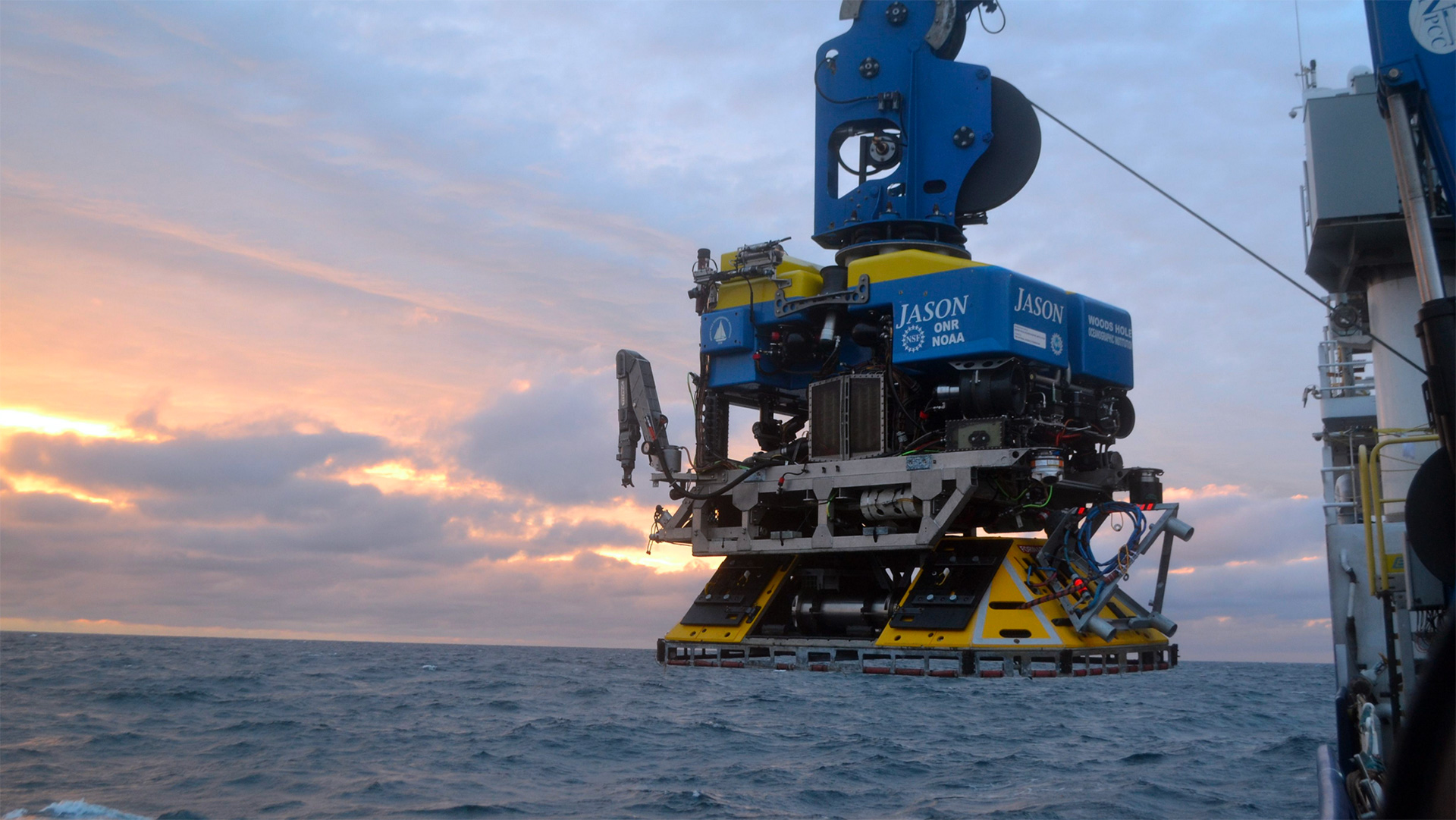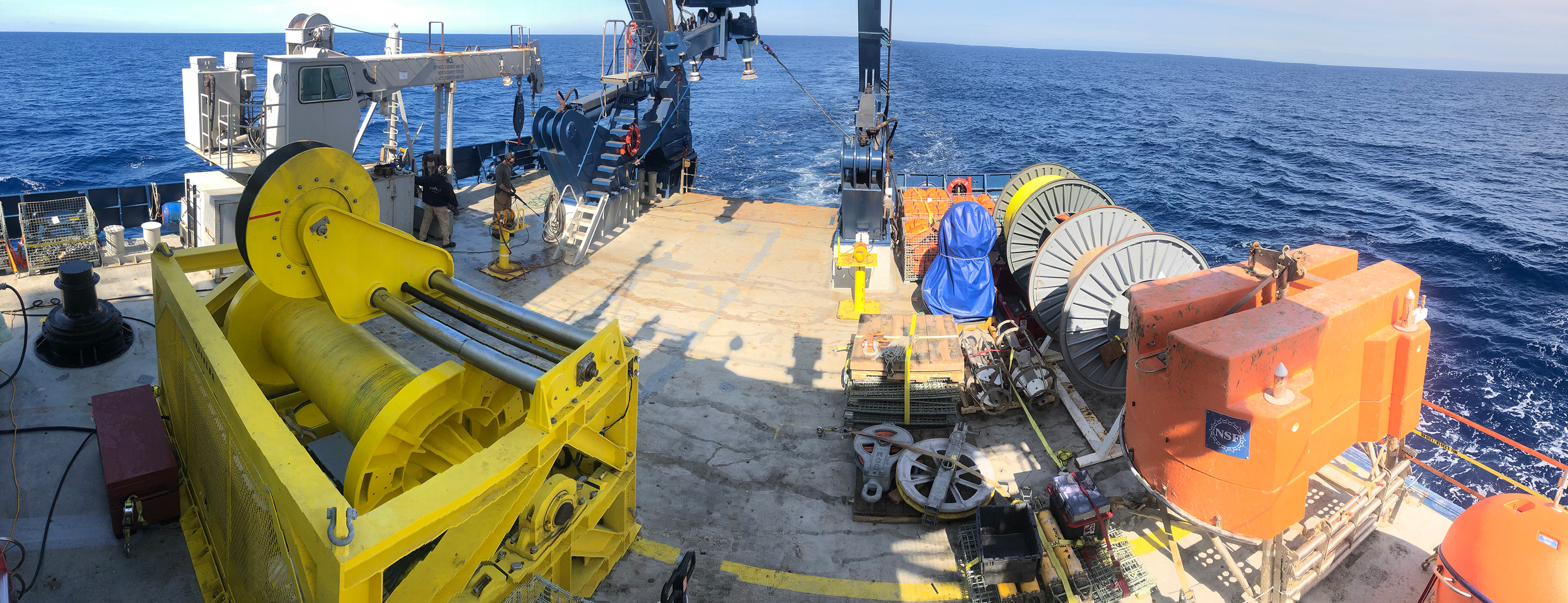Streaming Live From the Deep: The 2019 OOI Regional Cabled Array expedition

This summer’s exciting sea-going expedition in the Northeast Pacific to maintain the National Science Foundation’s Ocean Observatories Initiative Regional Cabled Observatory is underway, and you can join us at InteractiveOceans.
Over the next several weeks, the University of Washington Cabled Array team will be adding novel sensors that allow a global audience to watch live the daily deformation and seismic activity at the largest underwater volcano off our coast, Axial Seamount. Axial erupted in 2015 and is poised to do so again. In addition, we will be adding new instruments, including a 4K video camera aimed at a highly dynamic methane seep site off Newport, Oregon, called Southern Hydrate Ridge, where streams of bubbles issue from the seafloor daily.

The cruise, which departed June 2 and continues until July 12, is using the remotely operated vehicle (ROV) Jason onboard the R/V Atlantis operated by Woods Hole Oceanographic Institution. Nineteen U.S. and international undergraduate students are working side-by-side scientists, engineers, ROV team, and ship’s crew on the expedition as part of the UW experiential at-sea VISIONS program.
This expedition is highly complex with a diverse array of more than100 instruments, junction boxes, and instrumented pods on the Shallow Profiler Moorings that will be recovered, installed, and tested. R/V Atlantis will be “packed to the gills” on each of the four legs that make up this expedition, carrying everything from state-of-the-art mooring components to sharpies.
Starting around June 12 or 13, you will be able to watch our underwater operations live through streaming video as ROV Jason works more than 300 miles offshore and 5,000 feet below the surface down at the summit of Axial Seamount, which hosts 350°C (660°F) deep-sea hot springs that support some of the most bizarre creatures on Earth. We will also be 250 miles off Newport in depths ranging from 250 feet to 10,000 feet in some of the most biologically productive waters in the world and at sedimented sites on the Cascadia margin where methane-rich plumes jet from the seafloor. There, methane seeps support dense bacterial mats and large clams that thrive in the absence of sunlight on gases pouring from the seafloor.
A 4K camera funded by the University of Bremen will provide real-time views of the methane plumes and seafloor life to document this incredibly dynamic environment marked by large explosion pits and collapse basins. This is the second year of this international collaboration that expands the capability of the Regional Cabled Array and provides new imagery of these dynamic systems for all to see.
An enhanced, high-bandwidth satellite connection from R/V Atlantis will allow you to experience our deep-sea operations through daily live video streams. It will also allow onboard engineers and scientists to see data for the first time as new instruments are connected to the seafloor submarine fiber optic cables that bring the global Internet into the oceans. So tune in and see what we see when we see it.

